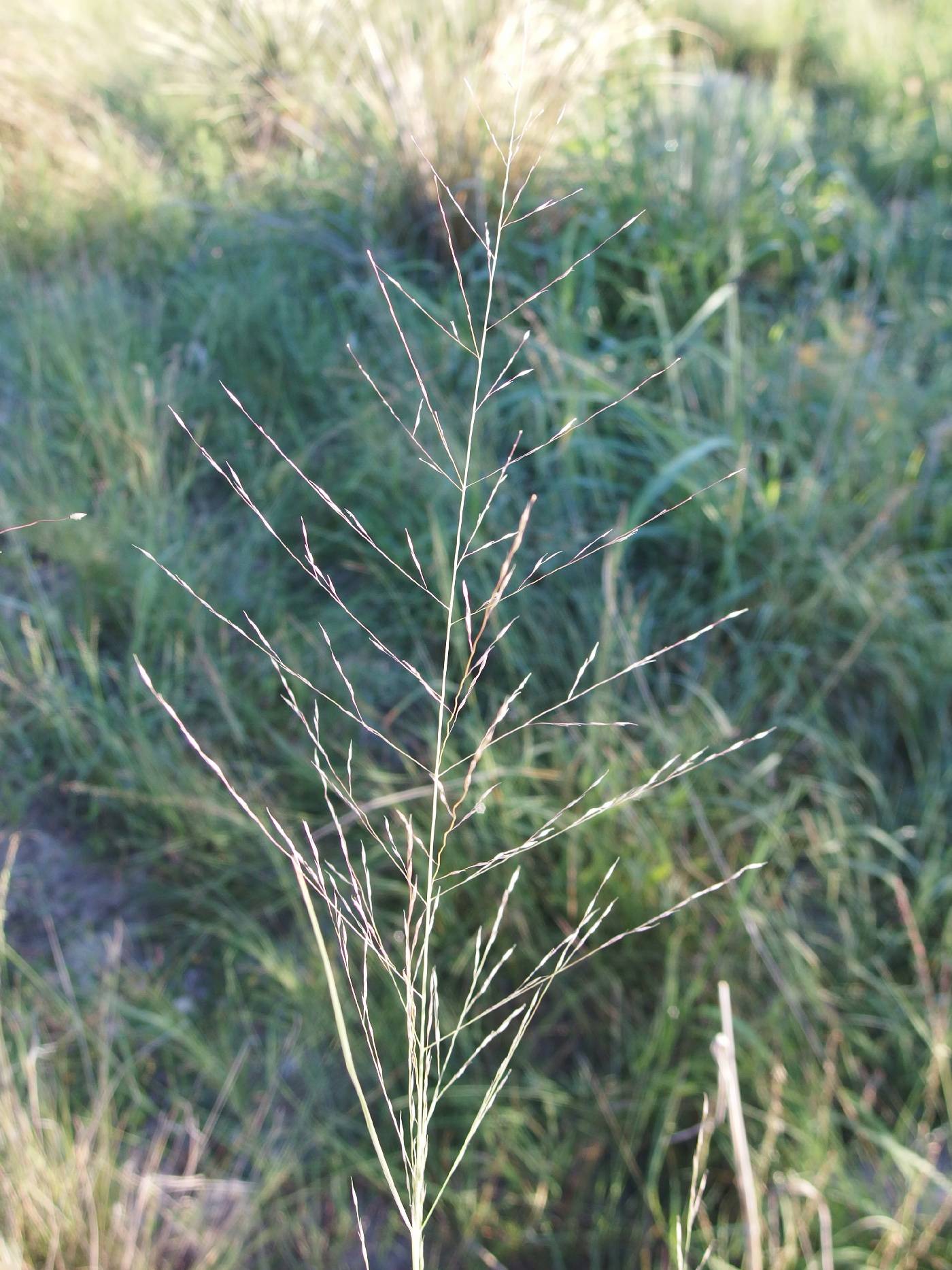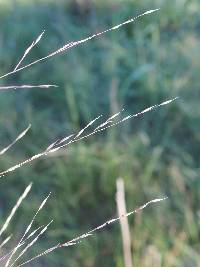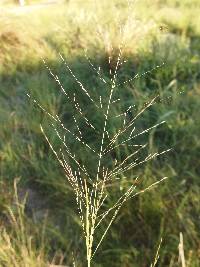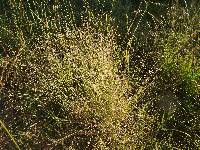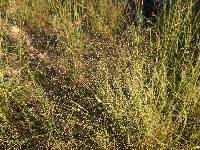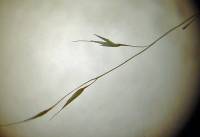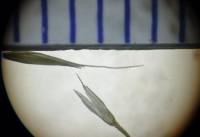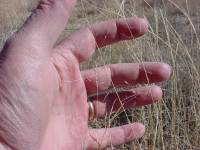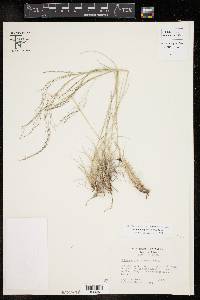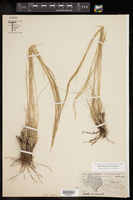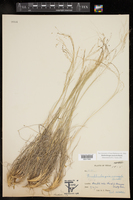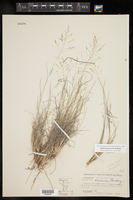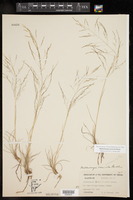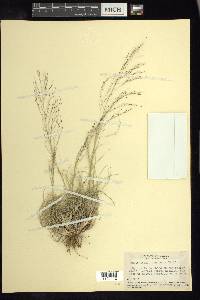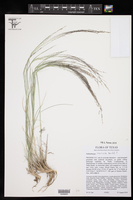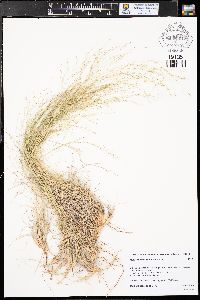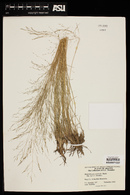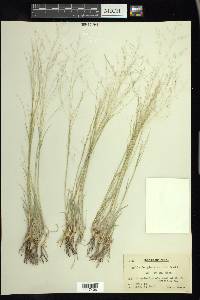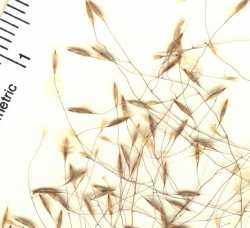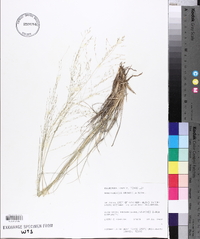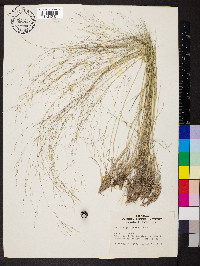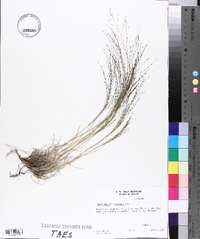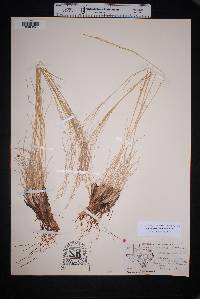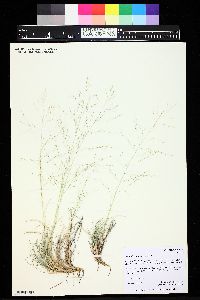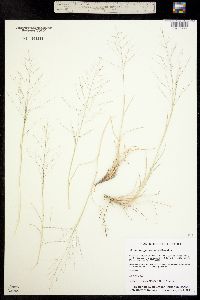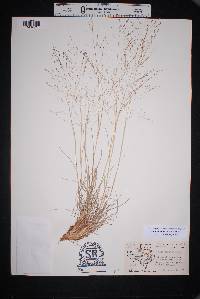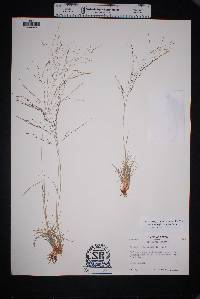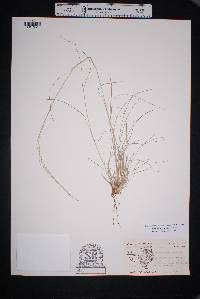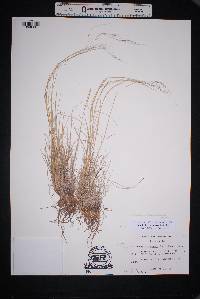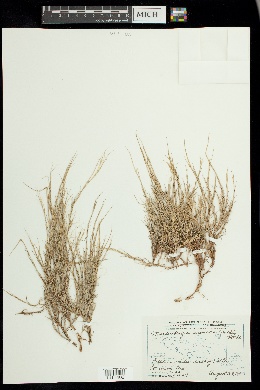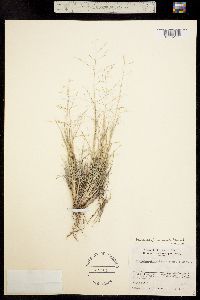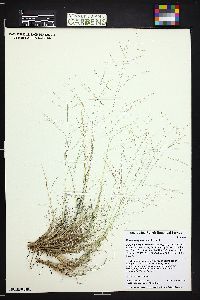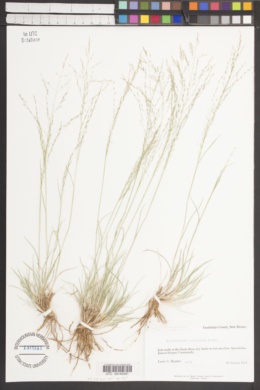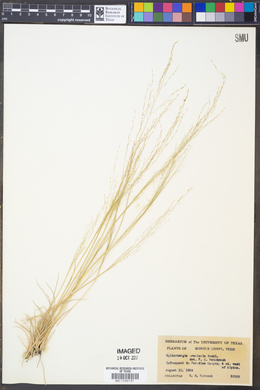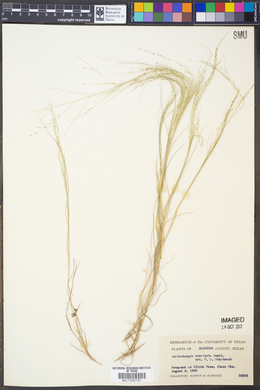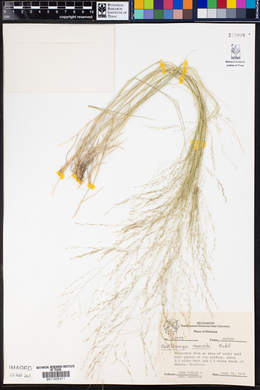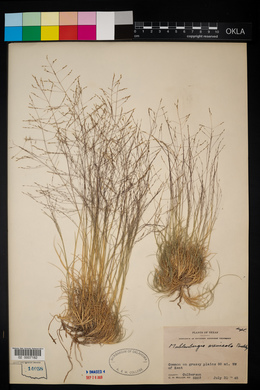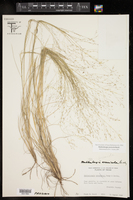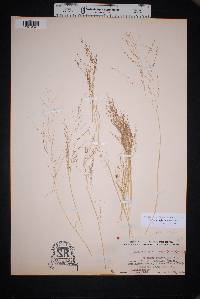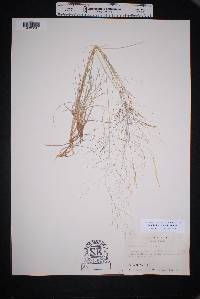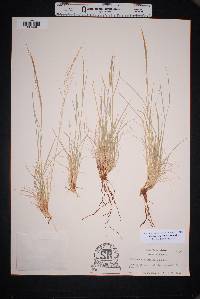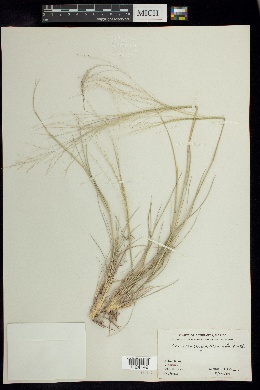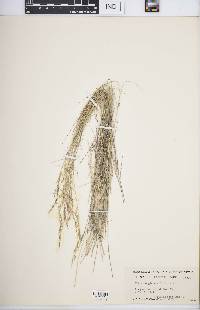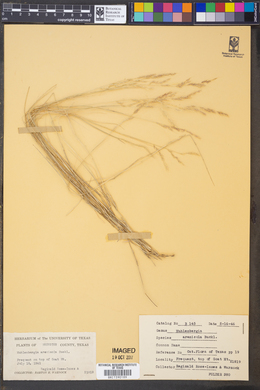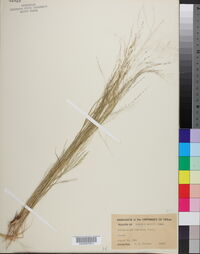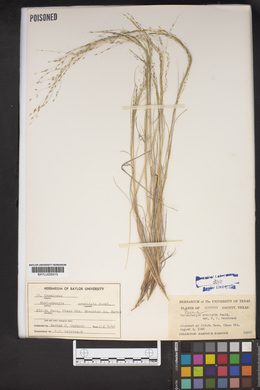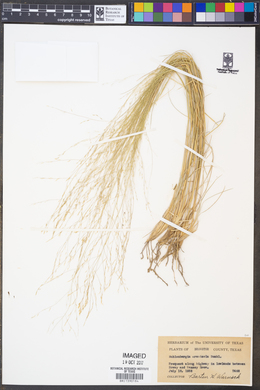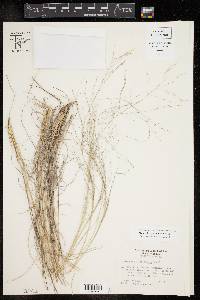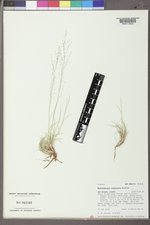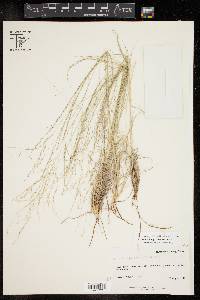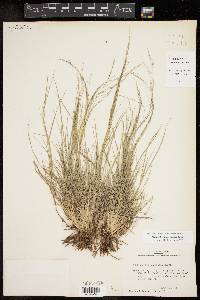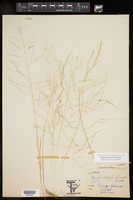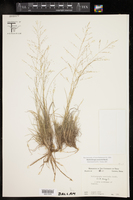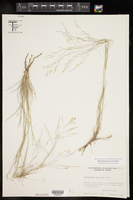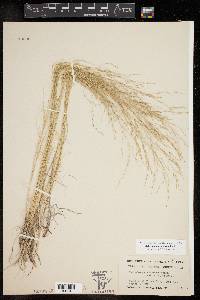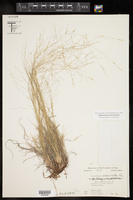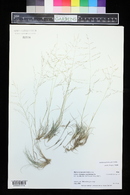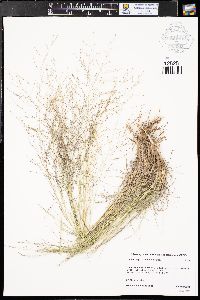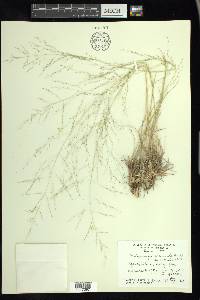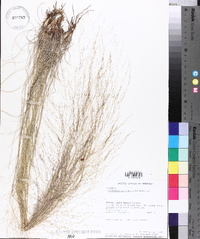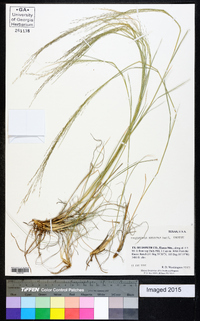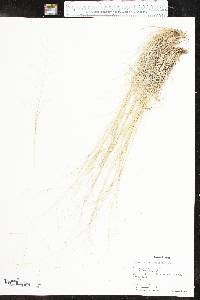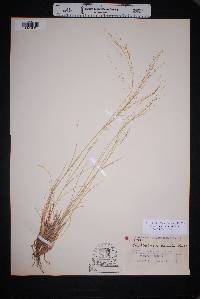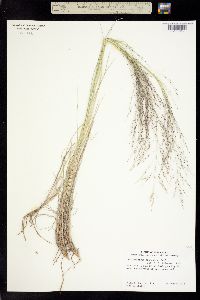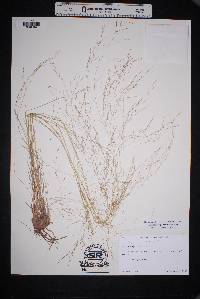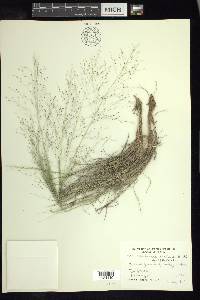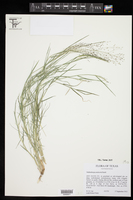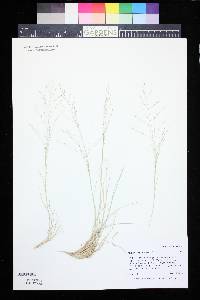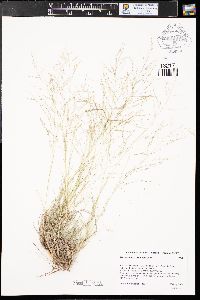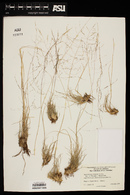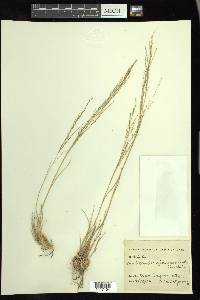Muhlenbergia arenicola
|
|
|
|
Family: Poaceae
Sand Muhly
|
Plants perennial; cespitose, not rhizomatous. Culms (15)20-60(70) cm, somewhat decumbent, 1 or more nodes exposed; internodes hispidulous below the nodes. Leaves somewhat basally concentrated, most blades not reaching more than (1/4)1/2 of the plant height; sheaths usually a little shorter than the internodes, not keeled, scabridulous, margins hyaline, basal sheaths rounded, not becoming spirally coiled when old; ligules 2-9 mm, hyaline, acute, lacerate, often with lateral lobes; blades 4-10(16) cm long, 1-2.2 mm wide, not arcuate, flat, folded, or involute, scabrous, often glaucous, midveins and margins not thickened, green. Panicles 12-30 cm long, 5-20 cm wide, diffuse; primary branches 1-10 cm, diverging 30-80° from the rachises, naked basally; pedicels 1-4(6) mm. Spikelets 2.5-4.2 mm. Glumes equal, 1.4-2.5 mm, 1-veined, apices scabridulous, acute to acuminate, minutely erose, unawned or awned, awns to 1 mm; lemmas 2.5-4.2 mm, narrowly elliptic, usually purplish, scabrous distally, appressed-pubescent on the lower 1/2-3/4 of the margins and midveins, apices acuminate, awned, awns 0.5-4.2 mm; paleas 2.5-3.5 mm, narrowly elliptic, intercostal region sparsely pubescent, apices acuminate, with 2 short (0.1-0.2 mm) awns; anthers 1.5-2.1 mm, greenish. Caryopses 1.9-2.3 mm, fusiform, brownish. 2n = 80, 82. Muhlenbergia arenicola grows on sandy mesas, limestone benches, and in valleys and open desert grasslands, at elevations of 600-2135 m. Its range extends from the southwestern United States to central Mexico. It also grows, as a disjunct, in northwestern Argentina. FNA 2003, Gould 1980 Common Name: sand muhly Duration: Perennial Nativity: Native Lifeform: Graminoid General: Tufted perennial grass, stems 20-60 cm, somewhat decumbent, scabrous or puberulent in vicinity of the nodes. Vegetative: Blades firm, narrow, scabrous, usually glaucous, 4-10 cm long, 1-2.5 mm wide, usually folded to involute, midveins and margins green, not thickened; ligule 2-9 mm, hyaline, obtuse to acute, often split down center forming two lanceolate projections; sheat Inflorescence: Panicle 12-30 cm long, 5-20 cm wide, diffuse; primary branches spreading but branchlets and pedicels often somewhat appressed; spikelets 2.5-4 mm; glumes lanceolate, equal to each other in length, 2 mm long, 1-veined, one or both with delicate awn-tip; lemma 2.5-4 mm long, narrowly elliptic, purplish, with awn 1-4 mm long. Ecology: Found on sandy mesas, limestone benches, and in valleys and open desert grasslands, from 4,000-7,000 ft (1219-2134 m); flowers July-October. Distribution: n and se AZ, NM, se CO, w TX. s and s OK; south to c MEX. Notes: Muhlenbergia is a large and diverse grass genus primarily distinguished by having single-flowered spikelets with unequal glumes. M. arenicola is an erect, perennial bunchgrass with basal clumps of thin, rolled blades that are a little less than half the height of the plant (4-10 cm long); a sparse, open inflorescence 12-30 cm long, with few spikelets at the ends of the branches, generally with only one short-awned spikelet per pedicel. M. torreyi appears similar but in that species the basal leaf blades are much shorter, 1-5 cm long, only about one-fifth the height of the plant. M. arizonica is also similar, but has white, thickened margins and midveins on the leaf blades and a shorter ligule, 1-2 mm long. Ethnobotany: Unknown Etymology: Muhlenbergia is named for Gotthilf Heinrich Ernst Muhlenberg (1753-1815) a clergyman and botanist from Pennsylvania; arenicola means dweller on sand. Synonyms: None Editor: SBuckley 2010, FSCoburn 2014, AHazelton 2015 |
|
|
|

